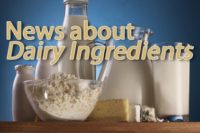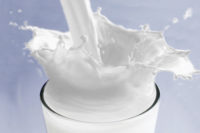When science is oversimplified, the resulting messages are often misconstrued and misleading. So it is with food. Consumers have bought into the misguided message that foods are unfit for human consumption if they contain more than five ingredients, ingredients they can’t pronounce or ingredients their grandparents wouldn’t recognize.
Although what consumers want — and don’t want — in their food is based on perception (not necessarily reality), in order to thrive, the food industry must meet consumer demand. Reformulation may be required. This is challenging, but benefits can include an improved nutrient profile.
Consider two dairy products with short or cleaned-up labels. Daisy cottage cheese, from Daisy Brand, Dallas, has four ingredients. Kraft, Northfield, Ill., reformulated its Kraft Singles (American and White American) so they no longer contain artificial preservatives.
The clean label quest has consumers scrutinizing dairy products. According to ingredient provider Ingredion Inc., consumers consider baby foods, dairy products and meat as the most important food categories to be “additive-free” (see cleanlabe
linsights.com). Additive-free, however, is just one possible clean label criterion. Let’s delve into consumers’ criteria for clean and how the dairy industry can comply.
Consumers define what clean means
“It’s a conundrum,” said Lauren Swann, registered dietitian and owner of Concept Nutrition Inc., a Pennsylvania-based consulting service specializing in food labeling and nutrient analysis. “The clean label concept is vague and consumers aren’t sure what they want besides ‘natural’ and no GMO.”
Consumers believe an ingredient is natural if it sounds like something they could buy and keep in their kitchen cupboard, explained Swann. Conversely, if it’s a vitamin or mineral, it’s acceptable to many consumers — even if it’s synthetic.
Ingredion’s research reveals consumers’ perceptions of specific ingredients. For example: sugar is good/OK, guar gum is bad/borderline, and mono- and diglycerides are “ugly.” Other ingredients consumers “would avoid” include synthetic flavors and colors, sucralose, gelatin, xanthan gum and modified starch.
Perceptions of dairy-based ingredients vary, depending on the consumer. The most common dairy protein ingredients used in mainstream dairy products are whey protein concentrates and isolates, and milk protein concentrates and isolates, noted Ivan Gonzales, director of dairy, Ingredion.
There has been some concern with the word “concentrate” because it’s associated with “highly processed,” Gonzales added, but when consumers understand that concentrating the ingredient serves to increase the protein content, they’re more comfortable.
Tips for keeping it clean
How can the dairy industry formulate products that consumers deem “clean”? Experts advise looking at labels from a consumer’s point of view and changing product formulas. Here are a few tips from the experts:
- Clean label isn’t one size fits all, said Leaslie Carr, marketing manager of Wholesome for Ingredion. Determine your target market and know what consumers want.
- Conduct or purchase consumer research. And step back and think like a consumer, said Swann. Ask yourself: Does this look like a clean label?
- Declutter. Find ways to remove unnecessary ingredients.
- Use dairy-derived ingredients. Dairy proteins can be listed on the label as milk protein or whey protein. They replace stabilizers such as starch, pectin or gums noted Earl Christiansen, R&D Scientist, Glanbia Nutritionals, UK.
- Clear up confusion with functional labeling. If you’re using an ingredient that consumers wouldn’t typically expect, said Carr, put a descriptor behind the ingredient on the label to explain what it is and/or why the ingredient is necessary.
Keeping labels clean is an ongoing process due to consumers’ ever-changing perceptions and desires.
“Labeling issues have gone on for a long time, and they can’t be detangled with a few quick solutions,” said Swann. “I’m really impressed with companies that are getting rid of ingredients that aren’t necessary. It’s good that consumers are speaking up and the industry is responding.”
Clean Dairy
- Daisy sour cream
- Horizon Organic whole milk
- Nancy’s organic cultured cream cheese
- Organic Valley lactose-free half & half
- Organic Valley pasture butter
- Siggi’s vanilla skyr Icelandic-style strained yogurt
- Stonyfield organic nonfat Greek yogurt
- Trimona organic Bulgarian yogurt
- Yasso peanut butter cup bars




